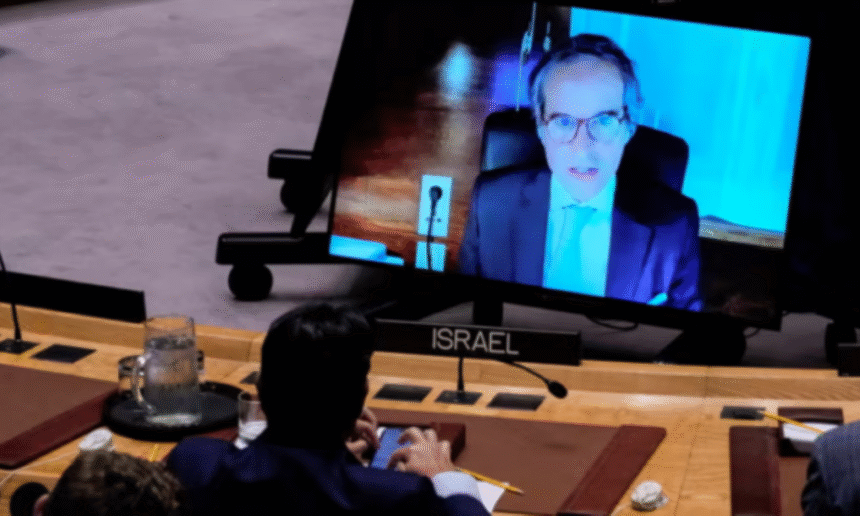The Director-General of the International Atomic Energy Agency (IAEA), Rafael Grossi, has informed the UN Security Council that the “above-ground plant where Iran was producing enriched uranium up to 60% has been destroyed.“
Grossi also stated that while radiological contamination and chemical contamination exist within the facilities at Natanz, it is manageable with appropriate measures. He added that there are no signs of direct attacks on the underground enrichment halls in Natanz, but that attacks on the electricity supply could have damaged the centrifuges.
Israeli Strikes on Natanz: Targets and Damage Assessment
Israel launched strikes against Iran, hitting both military and nuclear facilities, including Natanz, Iran’s largest uranium enrichment plant.
According to the Israel Defense Forces (IDF), the strikes targeted critical infrastructure at the facility, which they claim has been operating for years to achieve nuclear weapons capability and houses infrastructure necessary for enriching uranium to military levels. The IDF released a satellite photo detailing the structure and infrastructure of the Natanz facility, which was targeted both overnight and today. The IDF also published a 3D video depicting the Natanz uranium enrichment site.
The attacks specifically targeted the Control Building, electrical transformers supplying the enrichment system, and the underground area located at the center of the complex, which constitutes the core of Iran’s nuclear activity.
According to IDF spokesperson Major General Effie Defrin, Israel struck “Iran’s largest uranium enrichment facility,” referring to the underground nuclear complex at Natanz. Defrin stated that “this facility was used by the Revolutionary Guard to advance their military nuclear program,” noting that the Israeli attack “caused serious damage” to both the underground enrichment building and critical infrastructure at the site.
Defrin asserted that Tel Aviv was driven to this escalation because there “was no other choice.” “We hit the underground complex and other vital points in this area,” he said. On the published map, the IDF marked all areas considered strategic targets in red, emphasizing that these strikes are part of efforts to halt the Iranian regime’s nuclear program. “We will continue to act to prevent the Iranian regime from acquiring nuclear weapons,” the IDF statement concluded.
The IAEA also reported that “radiation levels outside the Natanz nuclear plant remain ‘unchanged’ after a wave of Israeli attacks.”
Why Natanz is a Key Target
Natanz is Iran’s primary facility for large-scale uranium enrichment, a process that yields material usable for both civilian and military purposes. Iran denies pursuing nuclear weapons and is not known to have produced military-grade enriched uranium, but the IAEA recently assessed that Tehran could produce nuclear weapons if it further refines its existing uranium reserves.
Natanz houses tens of thousands of centrifuges and is one of the main centers significantly contributing to the increase in Iran’s high-level enriched uranium reserves. The Natanz facility has been under international scrutiny for years. It was part of the 2015 nuclear deal, which limited Iran’s activities there, but since the U.S. withdrawal from the agreement in 2018 under President Donald Trump, activity at the facility has significantly increased. Israel is believed to have conducted several sabotage operations against Natanz in recent years, including a major cyberattack in 2010 and damage from explosives hidden in a table in 2020. A year later, Natanz suffered significant damage in another mysterious attack, which Iran again attributed to Israel.







